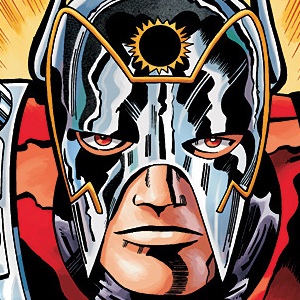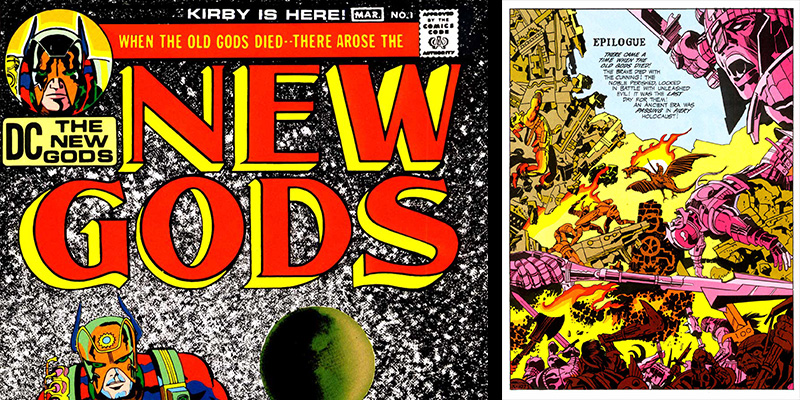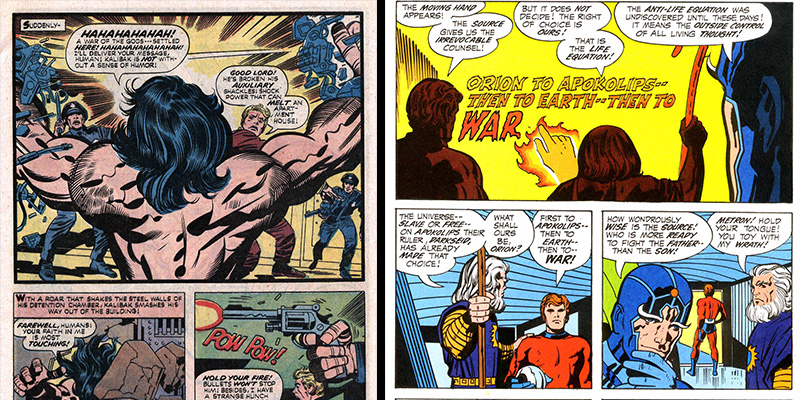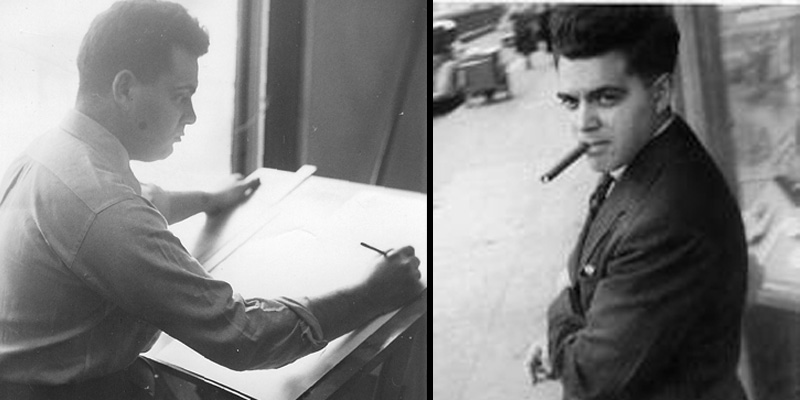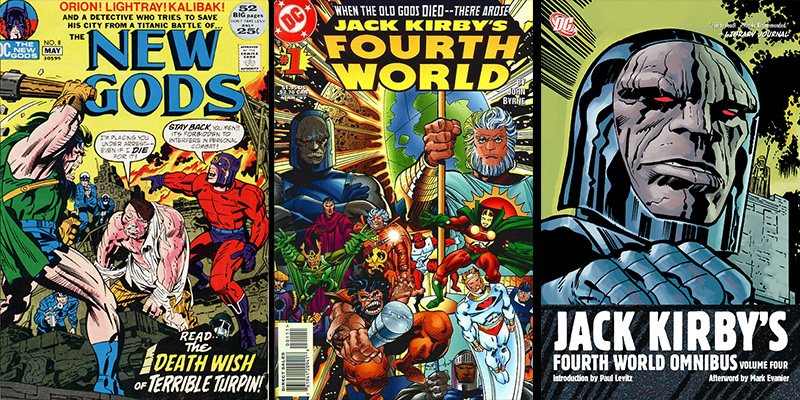The Greatest Comic Books of All Time: The Fourth World
The debate rages back and forth about how much or how little Stan Lee actually did in the creation of different Marvel characters. All agree however that his collaborators Steve Ditko and Jack Kirby did get the short end of the stick. Eventually, Kirby left Marvel to seek greener pastures at the Distinguished Competition.
At DC comics, Kirby made a pretty crazy pitch for a new series. The editors agreed, on one condition. He had to take control of another, established series as a launchpad. There are two different stories on what happened next. In one, Kirby, knowing just how good he was, asked them to give him the worst performing comic they were publishing and watch him turn into their best-selling. In the other, Kirby, a product of the great Depression, refused to take a job (and money) from someone else, and took a book that was currently without a creative staff. He got Superman’s Pal Jimmy Olsen, which was the worst-selling comic DC had and was in-between creative teams. The truth of what he said is lost to time.
And so Kirby took control of Jimmy Olsen with issue 133. Issue 132 featured a story where Jimmy fought a champion of communism for control of a strategically important island in the tropics. Issue 133 had Jimmy leading a motorcycle gang and infiltrating a hippy super-science commune while Clark Kent is marked for assassination by violent mobsters. Subsequent plots featured clones, time-travel, conspiracies from beyond the stars and a galaxy spanning war. It got weird, and not in the usual way Silver Age Superman stories were weird. Olsen would later tangle with the Loch Ness monster, a planet of horror movie villains and even regress to an angry caveman. There were high stakes, mad science and serious consequences, and this was just the start of Kirby’s plan.
The idea came to Kirby when working on Journey into Mystery at Marvel. JiM was an ongoing series dealing with the life and adventures of Thor and the other Asgardian gods. But Norse mythology warned of the Ragnarok, the twilight of the gods, the end of the world. What comes after that? When the old gods died, would new gods take their place? What would they be like? That was what interested Kirby, and that was the genesis of the Fourth World. The worlds New Genesis and Apokolips, led by the wise Highfather and the dreaded Darkseid, go to war, with humanity caught in the crossfire.
The next step was to release three new series, New Gods, Forever People and Mr. Miracle. The war in Jimmy Olsen was just one of many plots. In New Gods, Orion and Lightray went to war with a variety of misshapen monstrosities in Darkseid’s employ, the Forever People, wandered the Earth in a race for the Anti-Life equation, while Mr. Miracle followed the exploits of deserters from Darkseid’s legions. The characters were larger than life, and looked like they had been carved from granite. You had Darkseid, the stony faced dictator dedicated to the annihilation of free will, Granny Goodness who raised children to kill and die for Darkseid, Scott Free, the first to escape the grasp of Granny, the berserker Orion who hailed from beautiful New Genesis but burned with a hatred and fury to challenge Darkseid himself, “Terrible” Turpin, the beat cop who arrested a god, and the mysterious Metron, who rejected the war in favour of his quest for knowledge.
The rejection of war is a key theme throughout the story the Fourth World Saga, with Highfather declaring that war corrupts all involved regardless of their reasons for fighting. There is the story of a man and his son, one a soldier, the other a hippie, forever at each other’s throats. The Black Racer possesses the body of Willie Walker, a decorated Vietnam hero left paraplegic by the war. Kirby fought in World War 2, and drew inspiration from then-recent events and youth culture, including pacifism and the hippy lifestyle, particularly in the Forever People. In one memorable scene, Highfather strips off his armour, screaming his rejection of violence, before telling the young Orion to choose between the hand of friendship or the blade.
All the books Kirby worked on carried a banner. “Kirby is here!” It was the first time a creator was promoted, rather than the character. Even today, you would be hard-pressed to find another example of this.
Straight away there was a problem. Kirby had initially planned to draw up a detailed outline of different events that would happen and pass it on to other creators who would do the heavy lifting with the different series. But editorial nixed the idea, and he was left on his own to write and illustrate four different books, and edit three of those himself as well. So he rolled up his sleeves and went to work. He was known for his work ethic, often spending 16 hours a day over his drawing board. This was par for the course for him.
At the time, it was unprecedented. What he called the Fourth World Saga was going to have a finite run, then end and be collected in a series of books that would adorn the shelves of the collector. This had never been done before, and although collected editions are readily available today, a series with a finite run is rare even today. It’s especially impressive considering the sheer scale of creation. And it worked. At first. Sales were good, reception excellent. Yes, there was the occasional niggle, but it was a hit.
But then more problems came along.
While initial sales were very strong, midway through the run, prices for the comics soared by more than 60%. No matter what you’re selling, an increase that big is going to affect sales. Eventually, prices dropped slightly and the audience began to trickle back, but the stories had continued while they were gone and were now in a very different place to where they left off. There was editorial interference, with Kirby being given conflicting information on what he could and couldn’t do within hours of each phone call. And every time, he would return to the drawing board and find a way to make it work. Among the attempts to revitalise interest was a misguided attempt at a crossover with Deadman, which annoyed a lot of fans due to its extensive rewrite of the Deadman canon.
As I said already, the Fourth World was conceived as having an end. Orion and Darkseid would face each other in the Armaghetto of Apokolips in a final battle for the fate of universe. Editorial said no. Darkseid and Orion were marketable, come up with something else. What had started strong ultimately sputtered to a halt.
Darkseid et al remained a part of the larger DC universe, but without Kirby, the characters largely lost their way. Some creators got it right, but many didn’t, reducing Darkseid to just another alien warlord and Orion to a Hulk with an expanded vocabulary. Long after Kirby’s death in 1994, Grant Morrison brought the Fourth World to an end with Final Crisis, where Darkseid finally claimed the Anti-Life Equation and laid waste to Earth before being defeated by the combined forces of the DC universe.
Despite the non-ending, the Fourth World saga is great story, written and drawn by one of the best at the top of his game with an influence that cannot be denied. It has been collected in 4 volumes which can be found anywhere comics and books are sold.
Donal O’Connor
@dccomics, @JackKirbyMuseum, @eugewarrock
BONUS!! Jack Kirby Rap
